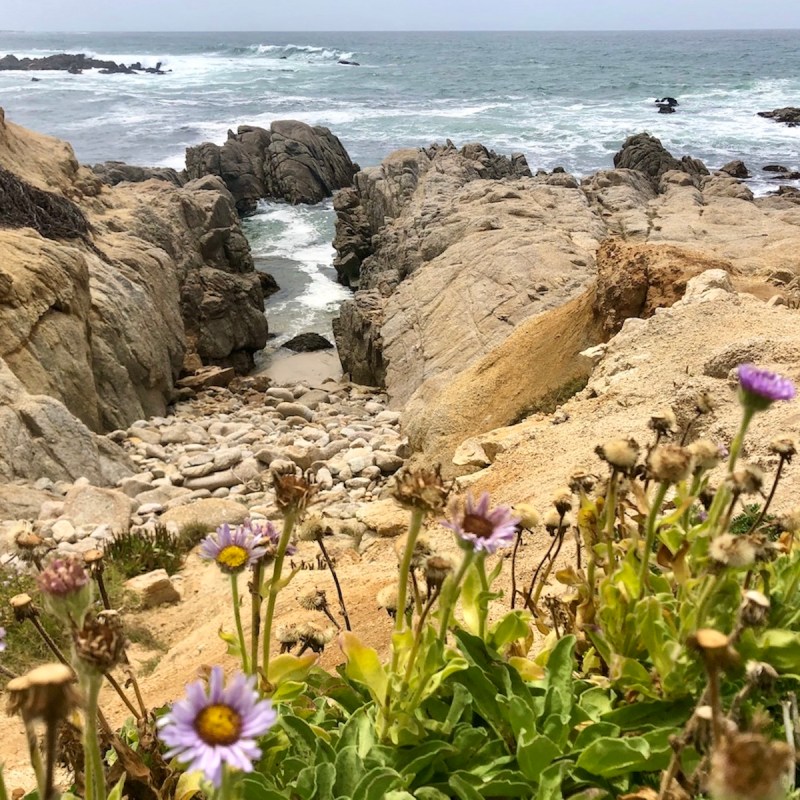
The Pacific Ocean is the undisputed star of the state parks and beaches that dot California’s Central Coast, but visitors don’t have to look hard to find plenty of great supporting locations as well.
Videos by TravelAwaits
From eye-catching bluffs and groves of gnarled oak trees to a glitzy castle on a hill, the section of the Golden State that lies along the coast between Los Angeles and San Francisco features a cast of state parks and beaches with serious star power.
Connecting it all is a gorgeous stretch of the Pacific Coast Highway, which hugs the coastline and offers continuously stellar views of the rocky coves, sandy beaches, and crashing waves of the Pacific Ocean.
Overall, the state of California boasts 280 state parks, beaches, and reserves. Some of the loveliest are located within an hour or two from one another in the area known as the Central Coast, taking in communities such as Pismo Beach, Morro Bay, Cayucos, and Pacific Grove.
Here are 8 spectacular state parks and state beaches along California’s Central Coast.

1. Estero Bluffs State Park
If you like your ocean experiences to have a touch of the wild, Estero Bluffs State Park is the place to find it. Located near the historic town of Cayucos, the bluffs region features an unspoiled coastline punctuated by uniquely shaped sea stacks and craggy tidepools. Visitors will also find wetlands, low bluffs, coastal terraces, perennial and intermittent streams, and a pocket cove.
Owing to its diverse terrain, the area is home to rich biodiversity, including marine, coastal salt marsh, freshwater marsh, riparian scrub, and grassland — all of which provide habitat for a number of endangered species, including the snowy plover, a sea bird known to wade through the waves.
The windswept splendor of Estero Bluffs is accessible via an easy half-mile walk from the highway to the sea. The state park can be accessed along the Pacific Coast Highway about 6 miles northwest of Cayucos, where pull-off parking areas are available along the highway.
While the view is great from the highway, taking the short walk to the ocean is definitely worth the effort. You will pass through a mostly flat grassy area before arriving at the steep bluffs that look out onto the sea. A walk along the bluffs will reveal a number of spots for scrambling down to the beach, where visitors will find tidepools, exposed rocks, and crashing waves.
The park features 4 miles of trail, but visitors can easily shorten their walk to include just a mile or two. Depending on the route, a visit to Estero Bluffs could take anywhere from 1 to 3 hours.
Pro Tip: Dogs are allowed, on-leash, in the southern portion of the park, but horses and bikes are not allowed anywhere in the park.

2. Asilomar State Beach
Its name is derived from Spanish words meaning “asylum (refuge) by the sea.” Upon arrival at Asilomar State Beach, it is immediately apparent that the seaside stunner lives up to the name.
Located in the town of Pacific Grove on the Monterey Peninsula, Asilomar offers a mile-long stretch of sandy beach and rocky coves and has numerous scenic walks such as the three-fourths-mile Asilomar Coast Trail with its great views of the ocean and the nearby dunes, and the quarter-mile boardwalk through the Asilomar Dunes Natural Preserve that is located across the street from the beach.
Visitors who are lucky enough to arrive in the spring or early summer are likely to be treated to a burst of wildflowers in a range of colors, from magenta to pink to yellow.
Founded as a YWCA camp in 1913, the 107-acre state park is known officially as the Asilomar State Beach and Conference Grounds State Park. The Conference Grounds feature overnight lodging, which is available for reservations here.
Pro Tip: Pacific Grove and nearby Monterey are part of the California region known as Steinbeck Country, named after the famous U.S. author John Steinbeck. For ideas on things to do there, see Exploring Steinbeck Country: 8 Fascinating Things To Do.

3. Montaña De Oro State Park
Buff-colored cliffs perfectly complement the deep-blue waters of the Pacific Ocean in the Central Coast standout, Montaña de Oro State Park. While ocean views rule at the park, there are plenty of other activities besides sightseeing. Hiking, camping, bird watching, and kayaking are all popular attractions at the park.
Montaña de Oro is located about 10 miles south of Morro Bay and 16 miles west of San Luis Obispo, making it a conveniently central spot along the Central Coast. The small communities of Los Osos and Baywood Park are even closer, offering easy access to a laid-back beach scene.
Pro Tip: Montaña de Oro State Park originated as a ranch, and the area remains popular for horseback riding. The park’s main campground, Islay Creek, offers a number of campsites that allow for horses.
4. Los Osos Oaks State Natural Reserve
Just a few miles from the sunny beach towns of Los Osos and Morro Bay is a deep forest that features moss-draped, fantastically gnarled trees in an area known as the Los Osos Oaks State Reserve. The 90-acre grove consists of 800-year-old dwarfed live oaks that occupy an ancient dune habitat.
Along with the coast oak trees (stunted for various reasons relating to their location), the reserve also features coastal sagebrush, buckbrush, holly leaf, and coast buckwheat, as well as riparian trees like sycamore, willows, and cottonwoods. The shady forest nurtures a variety of wildlife including great horned owls, opossums, coyotes, and raccoons.
Los Osos State Reserve is located 5 miles east of Morro Bay and 8 miles west of San Luis Obispo.

5. Morro Strand State Beach
For ocean lovers who gravitate to long walks on the beach, the Morro Strand State Beach is hard to beat on the Central Coast. The stretch of flat, sandy beach seems to go on forever, and at 3 miles, it offers plenty of space for solitude.
Just 2 miles north of the landmark Morro Rock, the Strand Beach offers great views of the region. The beach is also known as a wonderful spot for picnicking, fishing, windsurfing, jogging, and kite flying.
Pro Tip: The Morro Strand State Beach has a 76-campsite campground with spaces for tents and RVs. Online reservations can be made six months in advance.

6. Pismo State Beach Butterfly Grove
If the thought of thousands of monarch butterflies fluttering through a beach-side grove of eucalyptus and cypress trees sounds too good to be true, then the Pismo State Beach Butterfly Grove should definitely be on your travel list.
The grove, which is located in the picturesque oceanside city of Pismo Beach, is known to attract large numbers of western monarch butterflies because of its mild winter climate that offers a sheltered area buffered from cold temperatures, storms, and wind.
“Monarchs seek places with ideal microclimates for their winter habitat,” says the grove’s website. “The coastal environment along Central California and specifically along the coast at Pismo Beach provides the perfect microclimate for the western monarch to rest during the winter months.”
Pro Tip: The season for butterflies at Pismo Beach runs from November to February. Virtual tours are available on the grove’s YouTube site.

7. Cayucos State Beach
Anchored by its massive fishing pier, the Cayucos State Beach offers a taste of small-town beach life at its finest. The wide sandy state beach stretches on for 6 miles — all the way from the Morro Rock to the seaside village of Cayucos.
At virtually any time of the year, the white-sand beach serves as a gathering spot for people walking dogs, families having a picnic, or kids exploring tide pools.
Although the beach is simply splendid, the fishing pier will likely be the first thing that visitors notice in Cayucos. At more than 950 feet long, it stretches far into the Pacific Ocean and is a tourism magnet. It also has plenty of history to back it up. The pier was first built in 1872 by early settler Captain James Cass, and it served for years as an important shipping port. After the years took their toll on the pilings, the pier was rebuilt in 2015.

8. Hearst Castle State Park
With its star-studded Hollywood and newspaper-tycoon past, Hearst Castle is a highlight on any tour of California Central Coast state parks. From the opulent swimming pools to the fabulous great rooms to the extravagant tile art that decorates the stairways, the castle is sure to take your breath away.
So, even though the Hearst Castle State Park remains closed to the public (in late 2021), the estate is still a must on any future list of California Central Coast state parks. A notice on the state park’s website states: “Due to significant storms (in January 2021) that caused damage to the roadway leading up to the Historic Monument, Hearst Castle is temporarily closed.” The notice added that once the work is completed, “Hearst Castle will welcome back visitors.”
Visitors are encouraged to watch the state park website for news on the reopening. Once reopened, the state park will require advance reservations to visit Hearst Castle and/or the Visitor Center.
Pro Tip: For things to know before you go to Hearst Castle, check out 8 Tips For Touring Hearst Castle.
